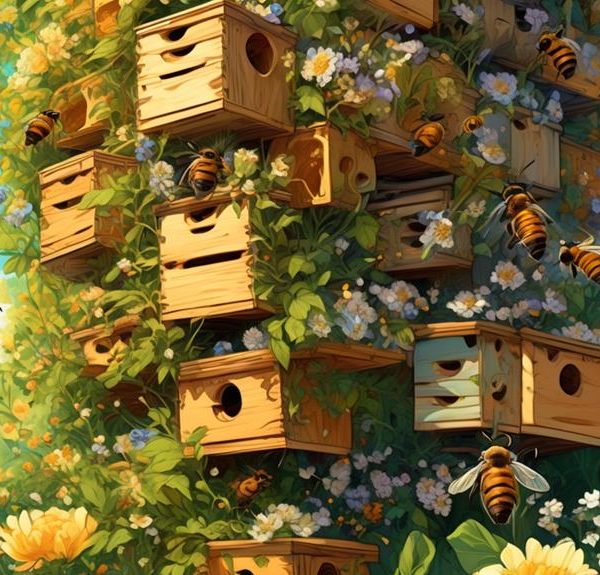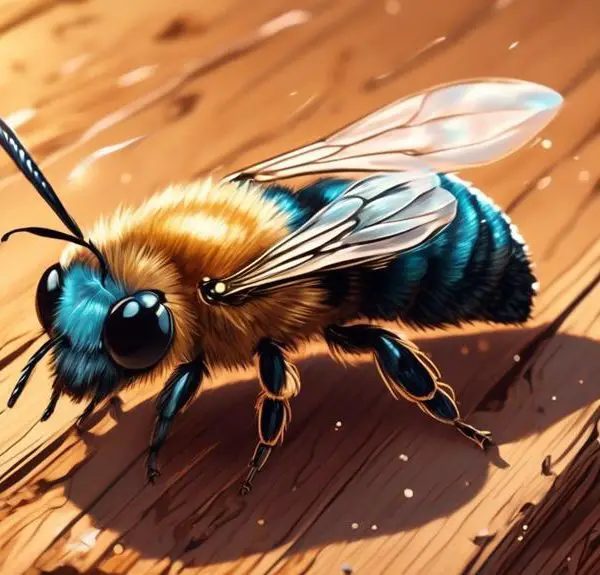Peek into the surprising world of mason bees and their intriguing relationship with wood, challenging your understanding of nature's little architects.
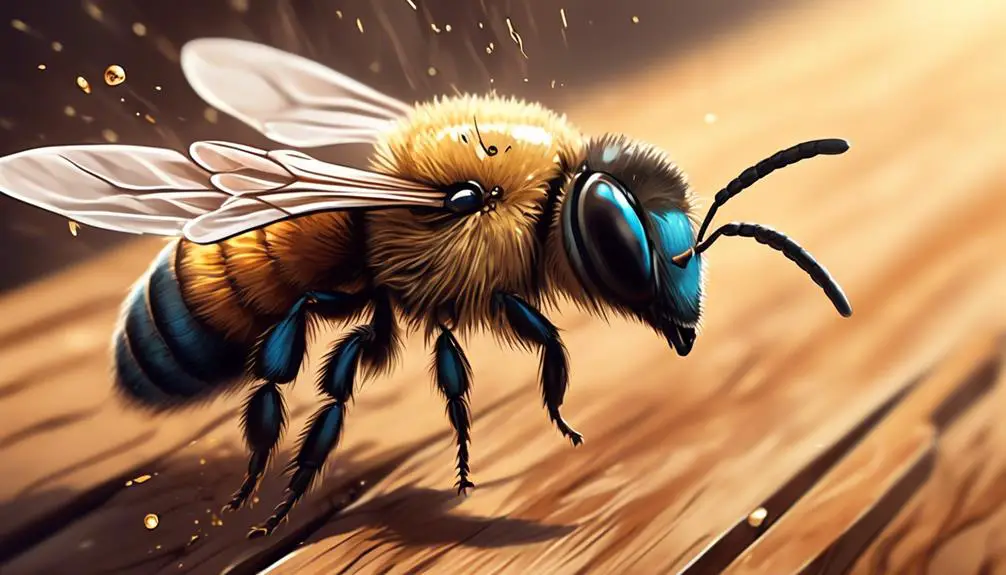
Do Mason Bees Bore Into Wood?
You may think that bees and wood have about as much in common as fish and bicycles. However, mason bees, a tiny species known for their industrious nature, have a surprising relationship with wood that might cause you to reconsider.
Specifically, you may be wondering if these diligent creatures are capable of boring into wood as part of their nesting habits. Buckle up, because what you'll soon discover about these fascinating insects will challenge your perception of the natural world.
Key Takeaways
- Mason bees are exceptional pollinators and more effective at pollination than honeybees.
- Mason bees make their nests in pre-existing holes in wood and seal off the chambers with mud.
- Mason bees prefer untreated, unpainted softwood for their nests and favor east or southeast facing holes for temperature regulation.
- Mason bees do not cause significant damage to healthy wood structures and can be deterred by applying sealant, using hardware cloth, or painting the wood.
Understanding Mason Bees
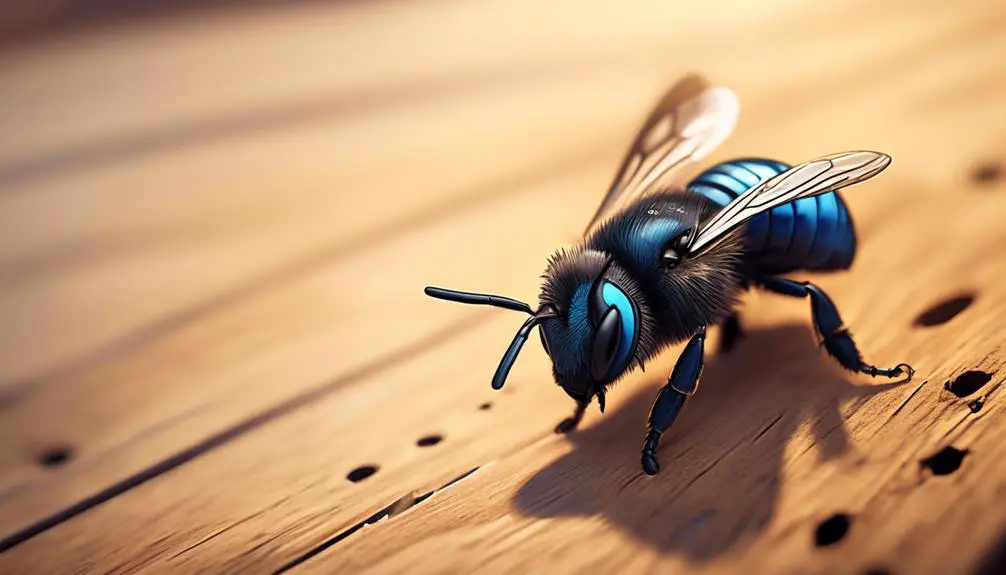
While you might be familiar with honeybees, there's a less-known, yet highly beneficial species called Mason bees that are exceptional pollinators and have fascinating life cycles. Unlike honeybees, Mason bees are solitary and make their nests in pre-existing holes in wood, rather than building hives. They're named 'Mason' because of the mud they use to seal off the chambers of their nests, similar to how a mason would work with bricks.
A key characteristic of Mason bees is their efficient pollination. You see, when they collect nectar and pollen, it sticks to the underside of their abdomen, which means they're transferring a lot more pollen between flowers. This makes them more effective pollinators than honeybees. They're also less aggressive, and while they can sting, they only do so if they're threatened.
Mason bees do have a shorter lifespan than honeybees, living only around 10 weeks. However, in this brief time, they can pollinate the equivalent area that would take honeybees several months. Understanding these bees can help us appreciate the diversity and resilience of nature, and the vital role they play in our ecosystem.
The Life Cycle of Mason Bees

Perhaps you'll find it intriguing that the life cycle of Mason bees, despite their short lifespan, is a marvel of nature, marked by efficiency and precision. They kick off their life in spring, when the adult female lays an egg in a tubular hole, often in wood. She then collects pollen and nectar, creating a food supply for the developing larva. A wall of mud, built by the female, separates each egg, hence their name.
The eggs hatch into larvae, feed on the stored nutrients, and grow. By summer's end, they've metamorphosed into adults but remain dormant within their cocoon till next spring, a process that mirrors the patience and tenacity of life itself.
Here's a snapshot of their life cycle:
Stage | Description |
|---|---|
Egg | Laid by female in tubular hole |
Larva | Feeds on pollen and nectar |
Pupa | Metamorphosis stage |
Adult | Emerges next spring |
Dormant | Rests through winter |
Mason Bees and Their Habitats
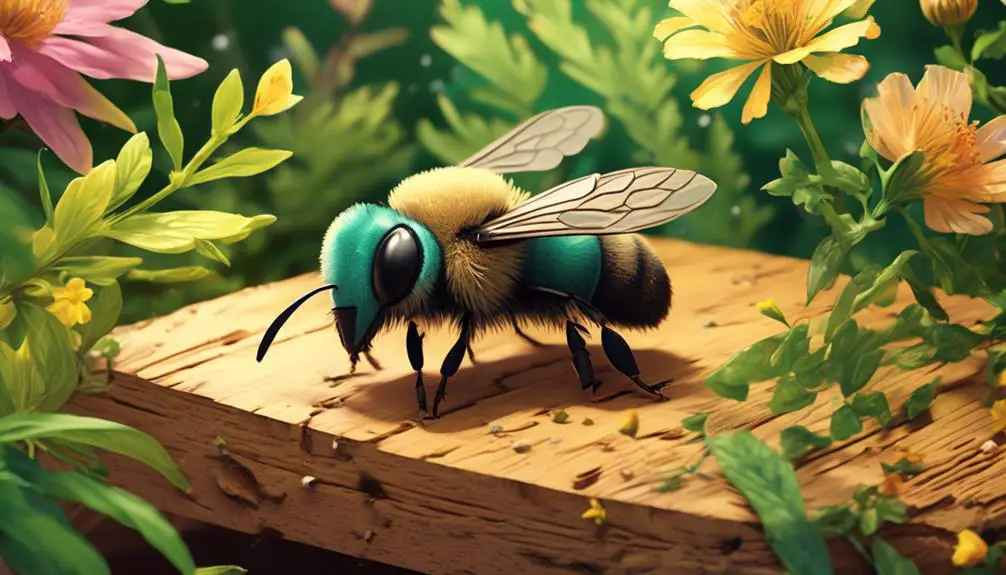
Understanding the intricacies of the Mason bee's life cycle, you'll now appreciate why their habitats, often characterized by wooden structures, play a crucial role in their survival and reproduction. Mason bees prefer to nest in pre-existing cavities rather than excavating their own. Thus, they're frequently found in hollow stems, beetle tunnels in wood, or artificially provided tubes.
Your observation of these bees might reveal their preference for wood, particularly untreated, unpainted softwood. Why? Because it's easier for their short, strong jaws to work with. They manipulate and shape the wood into brood cells, each containing an egg. It's their version of a nursery.
The orientation of these habitats is also crucial. Mason bees favor east or southeast facing holes, allowing the morning sun to warm their nests. This temperature regulation is vital for the developing larvae.
Contrary to what you might think, Mason bees aren't destructive. They don't harm healthy, solid wood. Instead, they're nature's recyclers, capitalizing on wood already degraded by weather or other insects. Understanding their habitat preferences can help ensure their conservation, contributing to a healthy ecosystem.
Mason Bees Interaction With Wood

You'll find it fascinating to explore how Mason bees interact with wood, utilizing their robust mandibles to shape their nesting sites. These industrious insects prefer softwoods, like pine or fir, but aren't picky and will use whatever is readily available.
Their interaction with wood is truly a marvel of nature. Their mandibles, acting like miniature chisels, gnaw at the wood, excavating tiny tunnels which they meticulously fashion into individual cells. Each cell is a nursery for a single egg, with the bee laying up to several dozen eggs in a single tunnel.
Interestingly, they don't ingest the wood as part of their diet. Instead, the wood shavings are discarded, often seen as small piles near the entrance of their nest. It's a labor-intensive process, but one that ensures the safety and survival of their offspring.
It's important to note, however, that Mason bees don't cause significant damage to healthy wood structures. Their tunneling is limited to decayed or rotting wood, and their nests are often inconspicuous. So, while they interact extensively with wood, they're not a threat to your wooden structures. This interaction is simply a part of their natural life cycle.
Protecting Wood From Mason Bees
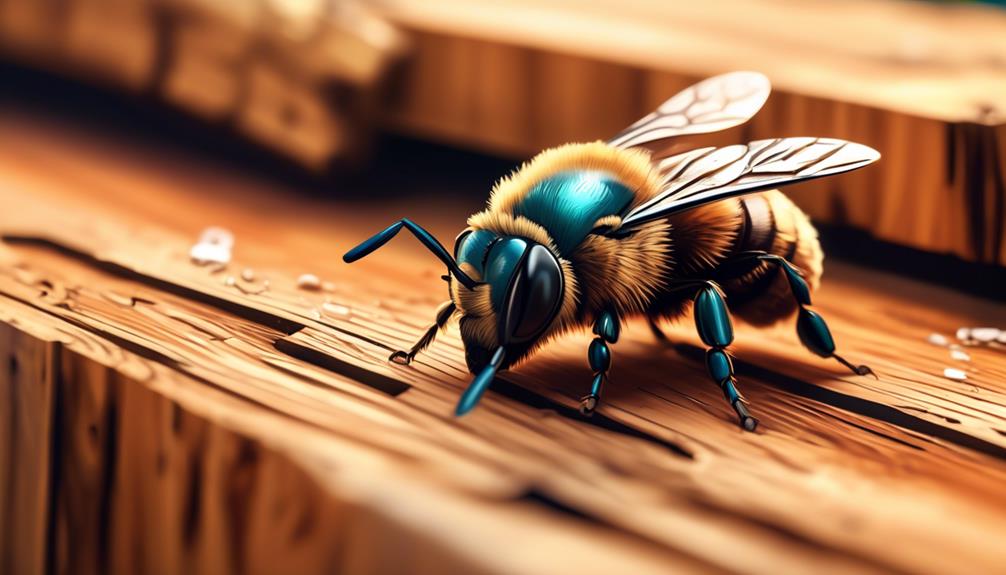
While Mason bees aren't a threat to healthy wood, it's still essential to safeguard your wooden structures from their boring activity, particularly if the wood is old or decaying. Mason bees are solitary creatures that prefer to nest in existing holes, so they are more likely to be attracted to wood that is already damaged or weakened.
Here are three methods you can use to protect your wood:
Method | Description | Effectiveness |
|---|---|---|
Sealant | Applying a sealant to the wood can prevent the bees from boring into it. | High |
Hardware Cloth | Placing a hardware cloth over the wood can deter the bees. | Moderate |
Paint | Painting the wood can make it less attractive to the bees. | Moderate |
Sealants are the most effective method, but they can alter the natural appearance of the wood. Hardware cloth can be less intrusive, but it might not be as effective. Paint can deter bees, but it may not offer the same level of protection as sealants. It's crucial to weigh the pros and cons of each method to decide the best approach for your specific situation.
Conclusion
Yes, you've got it right. Mason bees do bore into wood, creating nesting tunnels in dead trees or timber. They're not destructive like termites; instead, they're beneficial pollinators.
However, if you're concerned about your wooden structures, there are protective measures you can take. Remember, understanding these bees and their habits helps us coexist with them, acknowledging their crucial role in our ecosystem while also preserving our wooden structures.

